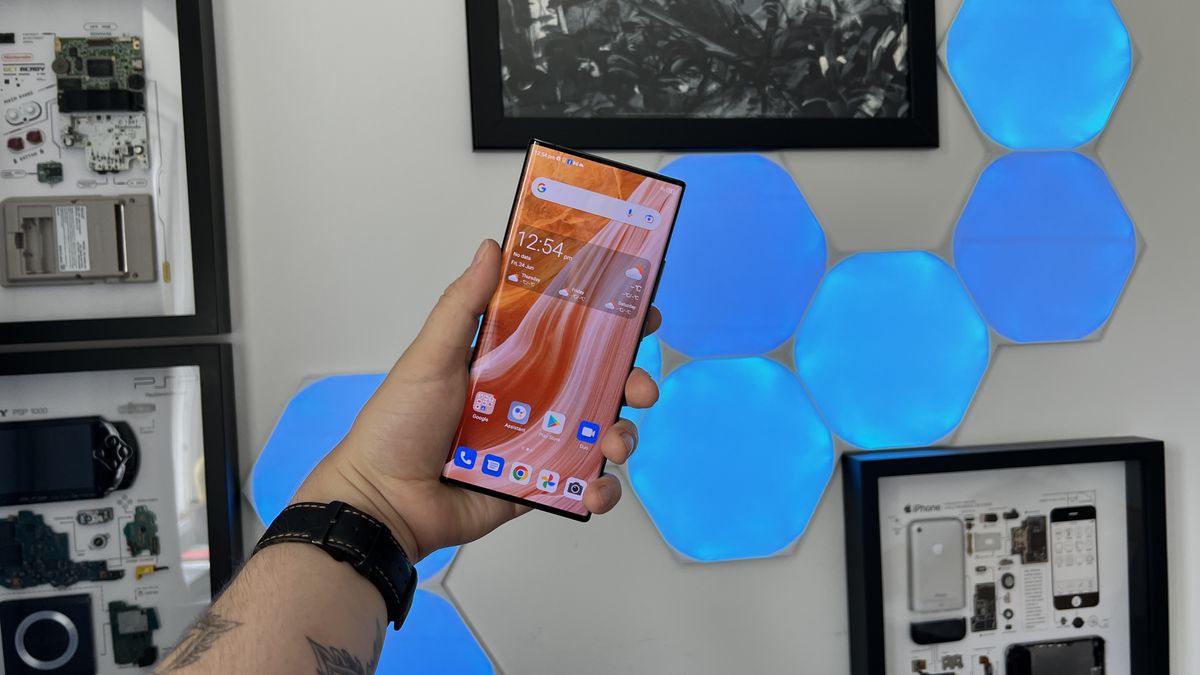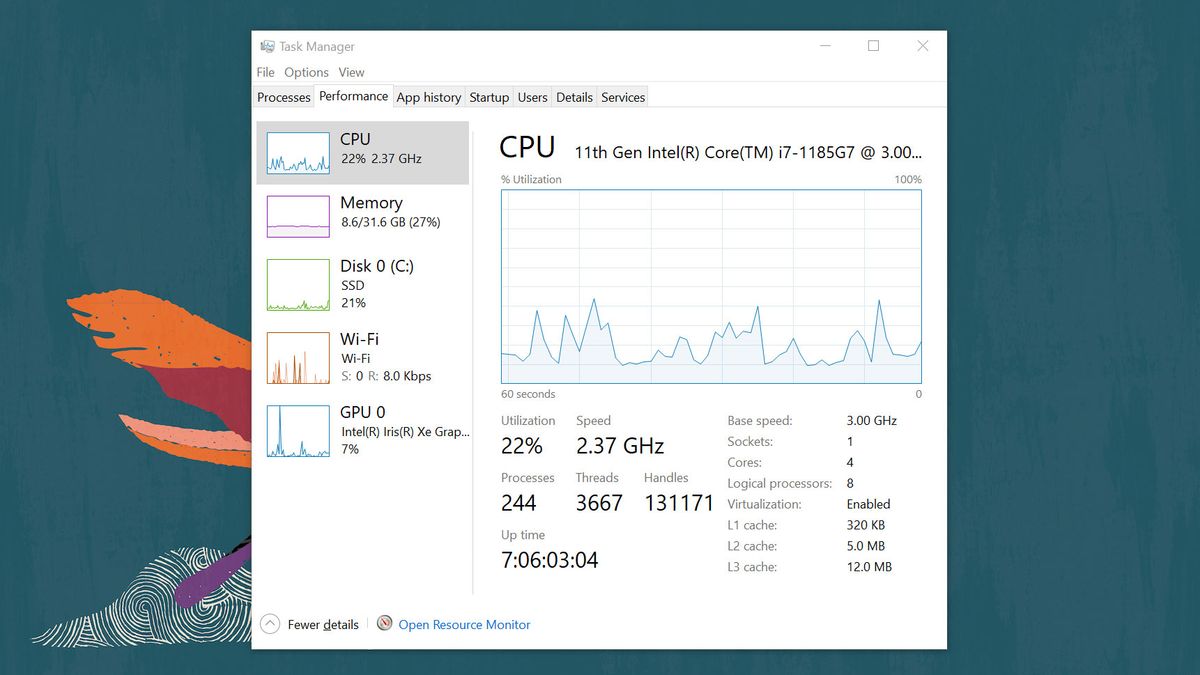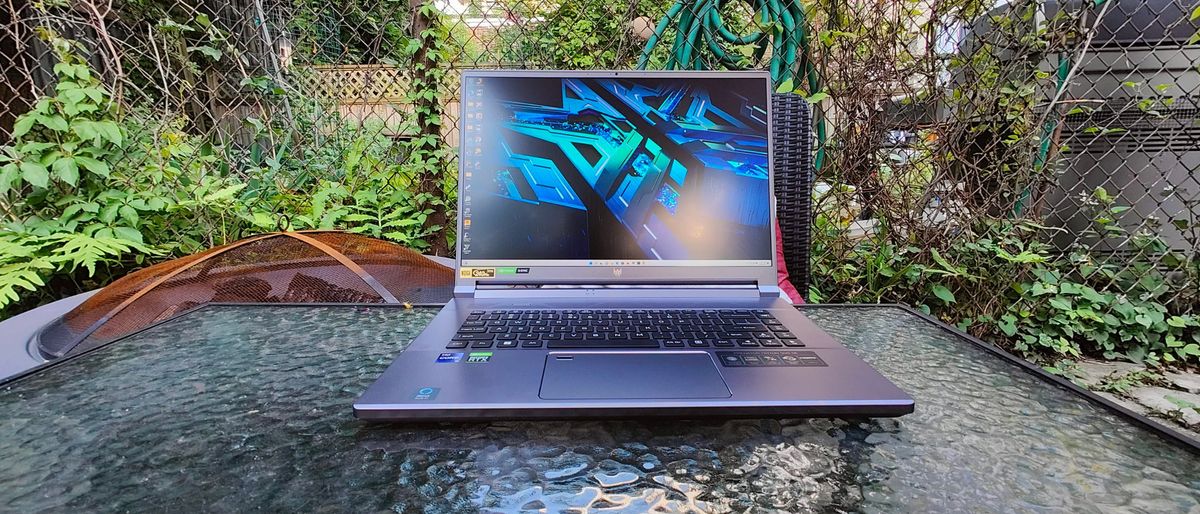ZTE Axon 40 Ultra Specs
Price: $799/£709 (8GB + 128GB), $899/£809 (12GB + 256GB)
OS: myOS 12 / Android 12
Display: 6.8-inch 120Hz AMOLED
CPU: Qualcomm Snapdragon 8 Gen 1
RAM: 12GB
Rear cameras: 64MP wide (f/1.6), 64MP ultrawide (f/2.4), 64MP periscope telephoto (f/3.5)
Front camera: 16MP (f/2.0)
Storage: 256GB
Battery: 5,000mAh
Size: 6.4 x 2.9 x 0.3 inches
Weight: 6.8 ounces
The ZTE Axon 40 Ultra brings big specs and a sleek design with an under-display selfie camera, vying for a spot as one of the best smartphones you can buy in 2022.
Packed with a 64 megapixel, triple-camera array, a Qualcomm Snapdragon 8 Gen 1 chipset, a massive 6.8-inch, AMOLED display, and a 5,000 mAh battery, the spec sheet certainly leads us to believe that we’re in for a treat.
But does the 40 Ultra stick the landing? Is this a strong Android flagship that has what it takes to battle amongst the best of them? Let’s find out.
ZTE Axon 40 Ultra: Price and configurations
The ZTE Axon 40 Ultra (opens in new tab) is out now in two configurations: 8GB RAM and 128GB storage for $799 (£709), or 12GB RAM and 256GB storage for $899 (£809).
This puts it in the same price range as the OnePlus 10 Pro and Google Pixel 6 Pro — both solid phones, so ZTE really needs to bring its A-game.
ZTE Axon 40 Ultra: Design
Just like the ZTE Axon 30 5G, this is a large slab at 6.4 x 2.9 inches, but its curvature feels more slender in the hand than it has any right to be due to its slim 0.3 inch frame and 7.2 ounce weight. For context, this is virtually identical to the OnePlus 10 Pro (6.4 x 2.9 x 0.33 inches, 7.1 ounces), but a tinge smaller and lighter than the Pixel 6 Pro (6.45 x 3 x 0.35 inches, 7.4 ounces).
This curved sandwich of glass and aluminum with a frosted back looks and feels slick and premium. The camera bump is rather sizeable, but that’s the giveaway that there’s a whole lot of tech in here (more on that later).
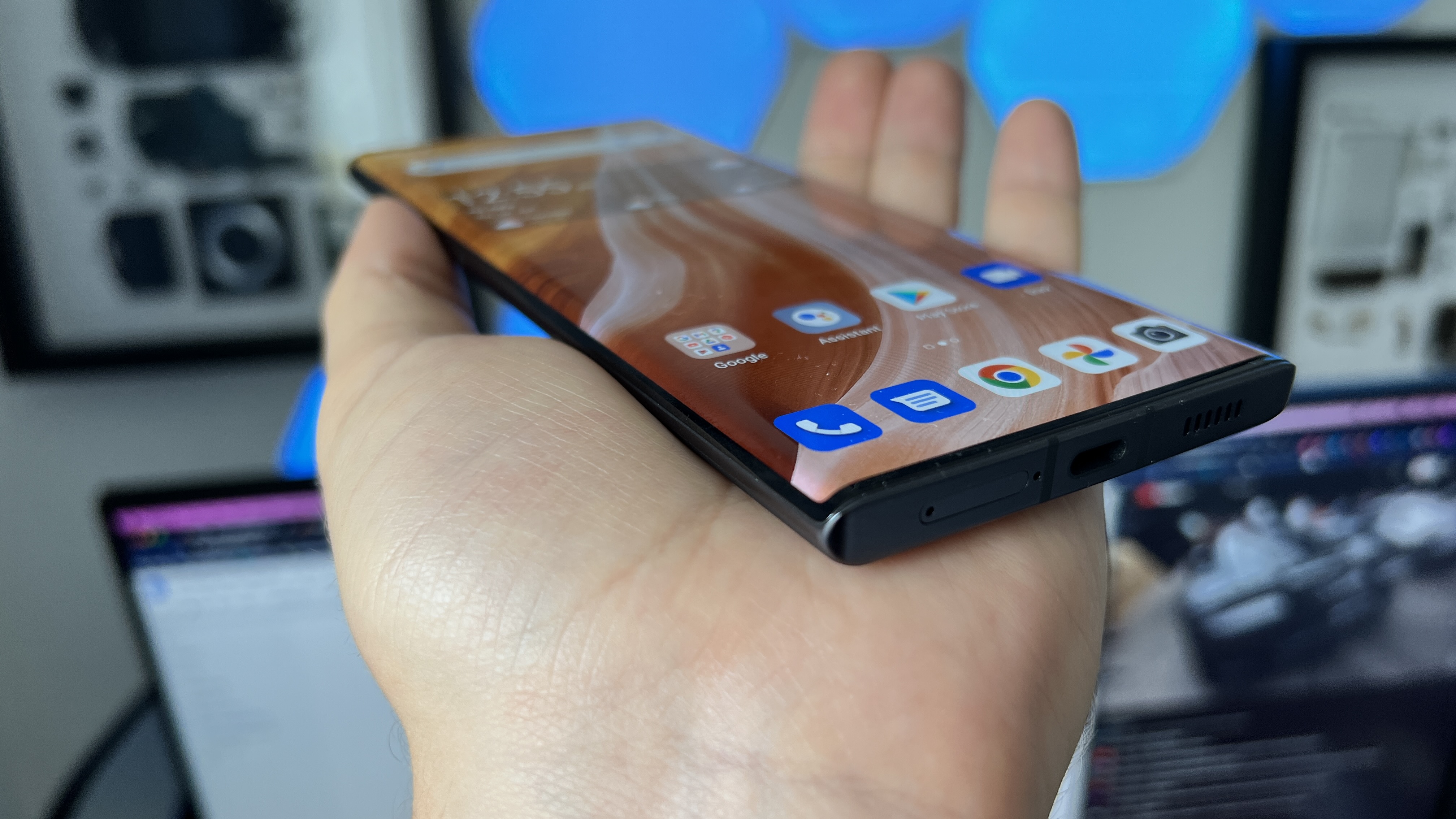
Personally, I prefer a flatter design, especially for the display, as the curvature of it does lead to unintended touches and makes it prone to scratches, but this is an upmarket aesthetic.
Also, shout out to the minimal branding on the back. It looks like ZTE read my previous review and provided a cleaner finish to the back. Nice work!
ZTE Axon 40 Ultra: Display
Thanks to the selfie camera being hidden underneath the display, you’re getting an uninterrupted, 6.8-inch AMOLED display with a 1116 x 2480-pixel resolution, a 120Hz refresh rate, HDR10+ support and a claimed 1,500-nit peak brightness.
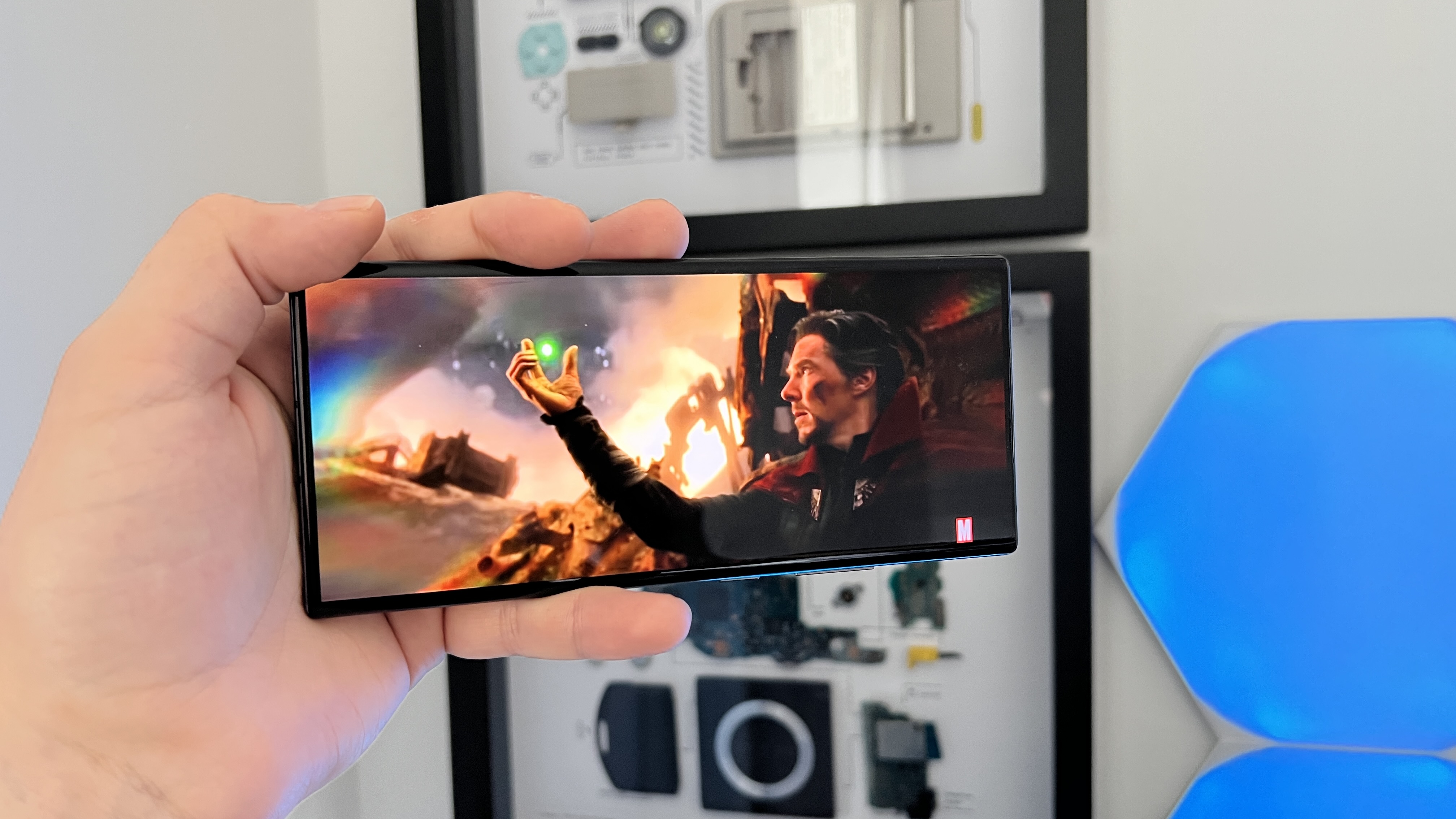
The end result is a gorgeously vivid, bright display that is viewable in all lighting conditions. Taking advantage of the display’s OLED benefits, the trailer for Spider-Man: No Way Home emanated depth in darker scenes, making the brighter effects of Doctor Strange’s spells really glow.
And of course, what about that bit of display over the front-facing shooter? As we found out with the Axon 30 5G, the pixel matrix wasn’t quite enough to mask the lens. For the 40 Ultra, however, the camera is completely invisible. I looked at this phone from every possible angle and could not see the telltale trap door whatsoever.
Overall, the display makes for a lovely viewing experience for gaming, binge watching and getting stuff done.
ZTE Axon 40 Ultra: Audio
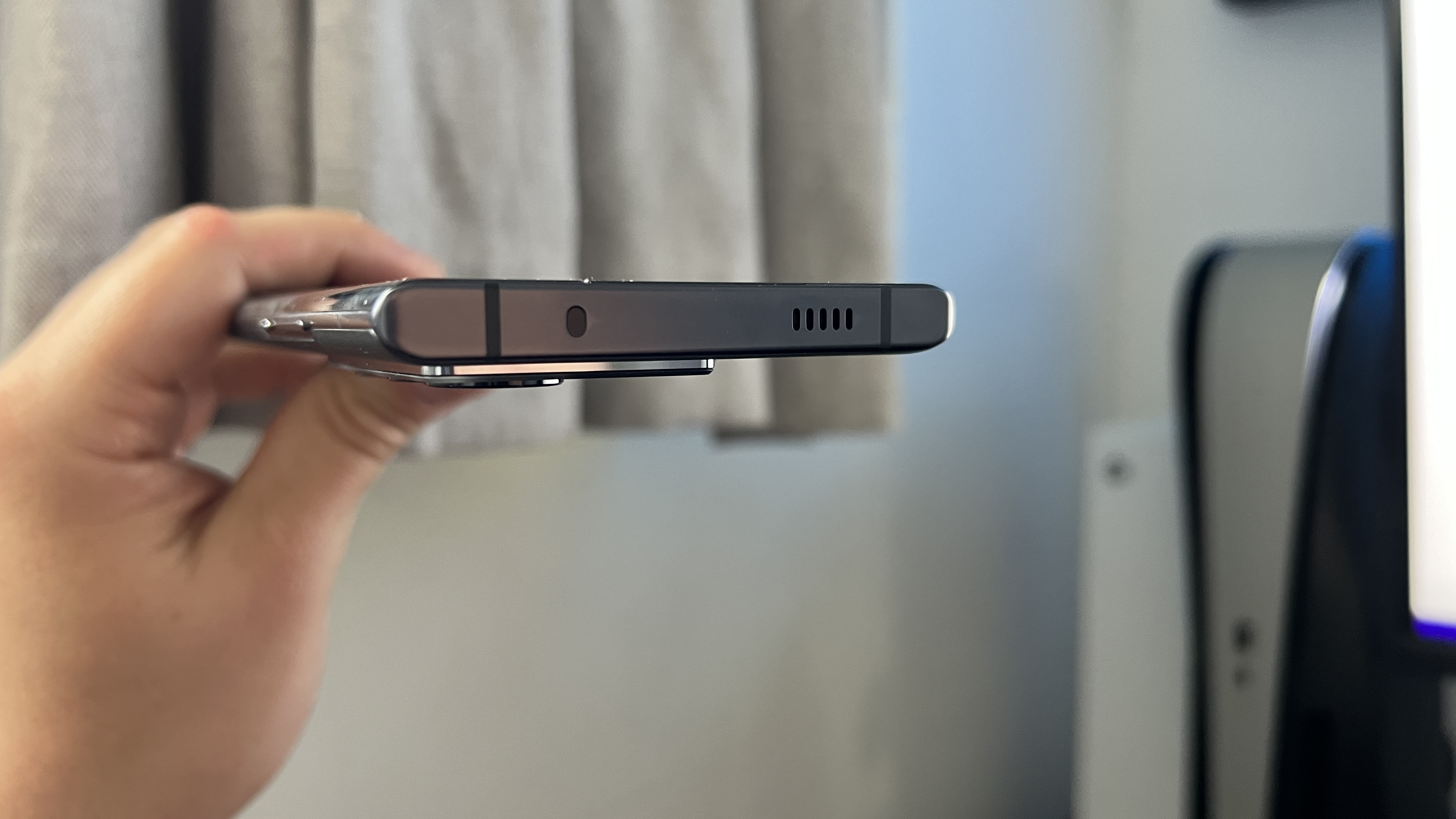
A strong screen needs strong sound for listening on-the-go with no earbuds, and the stereo speakers on offer here do provide a decent social listening experience that’s fit for TikTok doom scrolling and falling down YouTube wormholes.
Sure, you can make them distort slightly at higher volumes. When put under intense pressure with bass-heavy, intense metalcore such as Avoid’s EP “The Burner”, they can crackle slightly. But most of the time, everything is clear and finer details can be picked out.
Once again, no sign of a 3.5mm headphone jack, but ZTE does pack a pair of wired earbuds and a USB-C to headphone adapter in the box. Even though I’d always prefer a port on the phone itself, this is a more consumer-friendly option.
ZTE Axon 40 Ultra: Performance
Under the hood, the ZTE Axon 40 Ultra is packing some serious heat, which is being cooled by a nine-layer heat dissipation system. The spec list reads well: Snapdragon 8 Gen 1 chipset, up to 12GB of LPDDR5 RAM and 256GB of UFS 3.1 storage.

When put through its paces, the 40 Ultra hit a Geekbench 5.4 multi-core score of 3,383, which falls slightly behind the OnePlus 10 Pro (3,482) and demolishes the custom chipset of the Google Pixel 6 Pro (2,760).
For graphics, the ZTE phone hit a super smooth 65 frames per second in the 3DMark Fire Strike test, which beats both the 10 pro (61 fps) and the Pixel 6 Pro (40 fps). But of course, numbers tell half the story — it’s about how this performance translates into real-world use.
The end result of it all is near-instantaneous app opening, zero slow downs — no matter how much CPU-intensive multitasking I threw at it. It seamlessly handled all kinds of games running oh-so smoothly, including Real Racing 3 and Genshin Impact.
Put simply, there are no complaints about the performance of this phone, but do be warned: if you put it through its paces, the back gets pretty hot quite quickly. Nothing to the point of it being uncomfortable to hold, but it’s noticeable.
ZTE Axon 40 Ultra: Battery Life & Charging
The 5,000 mAh battery in the ZTE Axon 40 Ultra matches the capacity of the OnePlus 10 Pro and results in an all-day longevity, which means you shouldn’t have to worry about the capacity during an average day of use.
Waking up at 8 a.m., I went through an entire day to 10 p.m. with the usual work/entertainment (emails, calls, social media, taking some quick pictures, Spotify by day, gaming and YouTube by night) and ended with around 20% left in the tank.
Plus, the 65W fast charging is nice to have for quick top-ups — juicing this phone up to full in just under an hour.
ZTE Axon 40 Ultra: Cameras
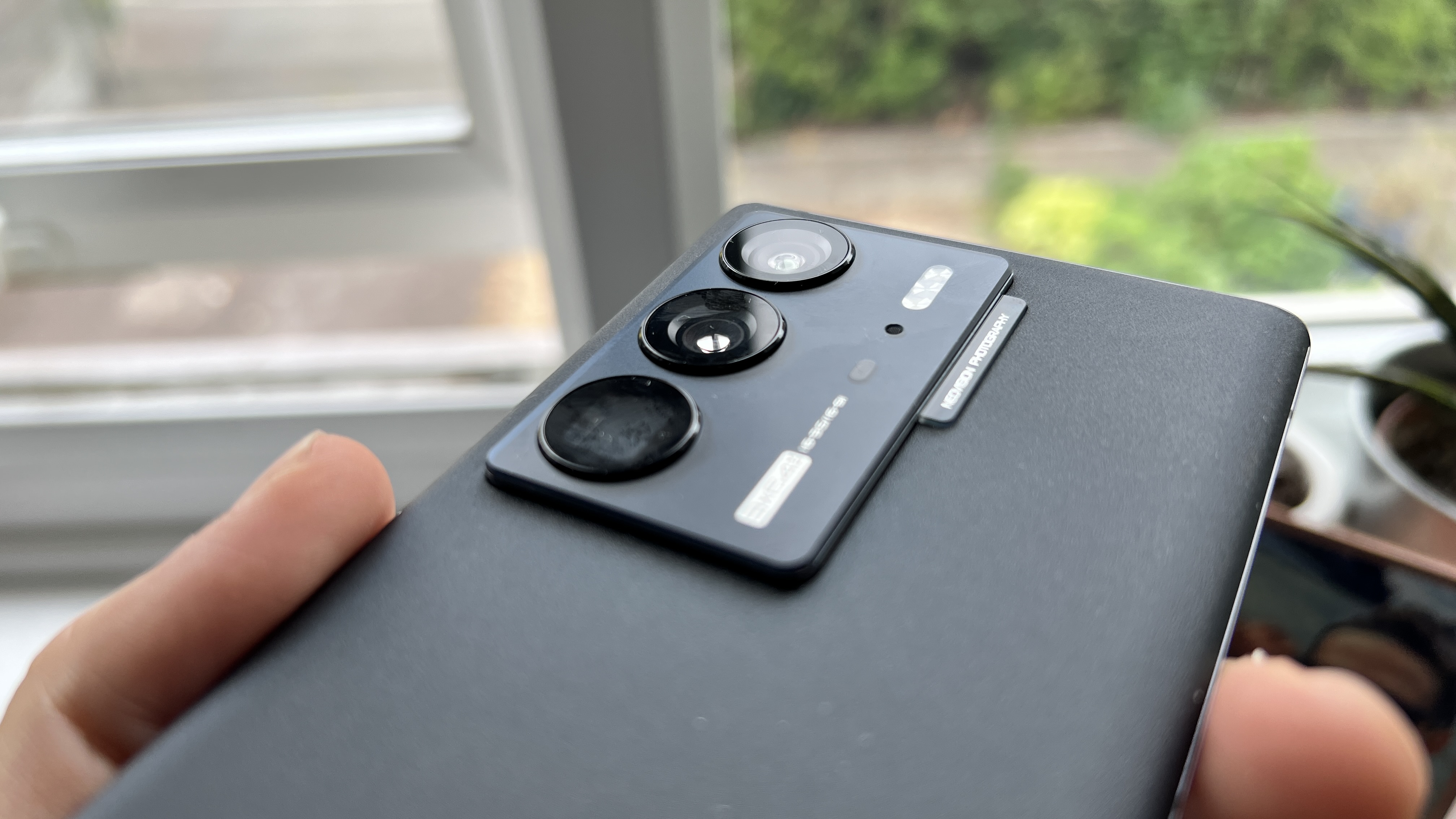
Summed up in one sentence: the under-screen selfie camera is still a potato, but the rear cameras are really nice.
You’ve got three 64MP snappers on the back, including a main lens with an f/1.6 aperture, a 91mm periscope telephoto at f/3.5, and a 16mm ultrawide at f/2.4. Details are crisp and colors are vibrant during the day across all lenses. The AI mode can again work a little too hard to boost the saturation, so keep that switched off.
You can also shoot up to 8K video and frame rates up to 120 FPS at 4K, which works fine in practice, but once again, the auto-focus is just too damn slow for any serious filming needs like vlogging — just keep it to shooting family videos.
Flip the phone over and there is a 16MP, front-facing camera hiding under the display with an f/2.0 aperture. Photos are super spongy and over-processed, looking like my partner’s photos in Barcelona after putting sunscreen on (seriously, how greasy is sunscreen!).
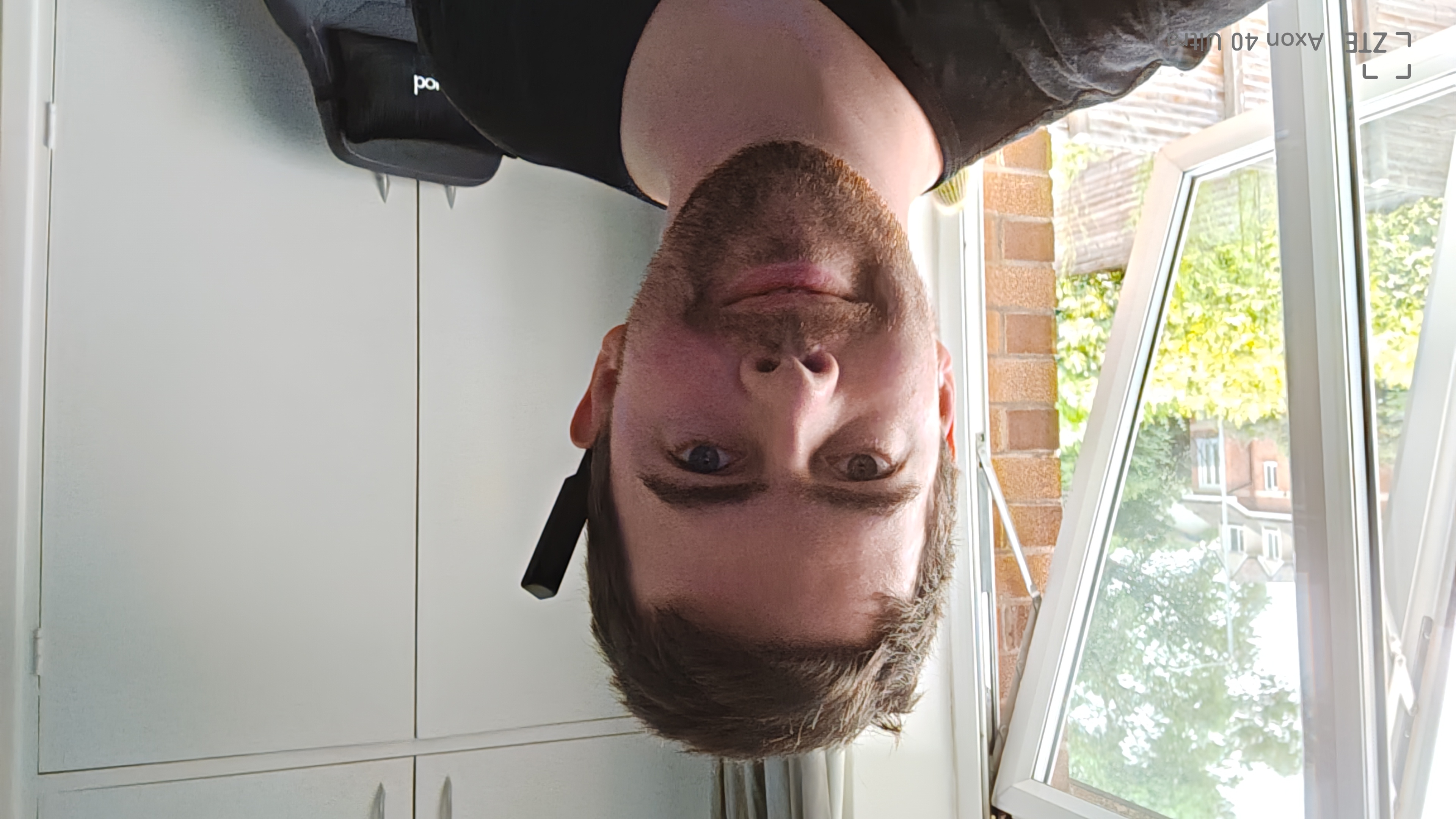
Quickly head over to view the photo in your camera roll after snapping it, and you can see the software tweaking the image for a few seconds to improve brightness and sharpness. None of it helps, but it shows just how much is needed to overcome the new camera tech.
Oh, and branded watermarks are on by default. You already know my thoughts on these and the warning I made to OEMs for this practice, so off comes half a star.
ZTE Axon 40 Ultra: MyOS 12
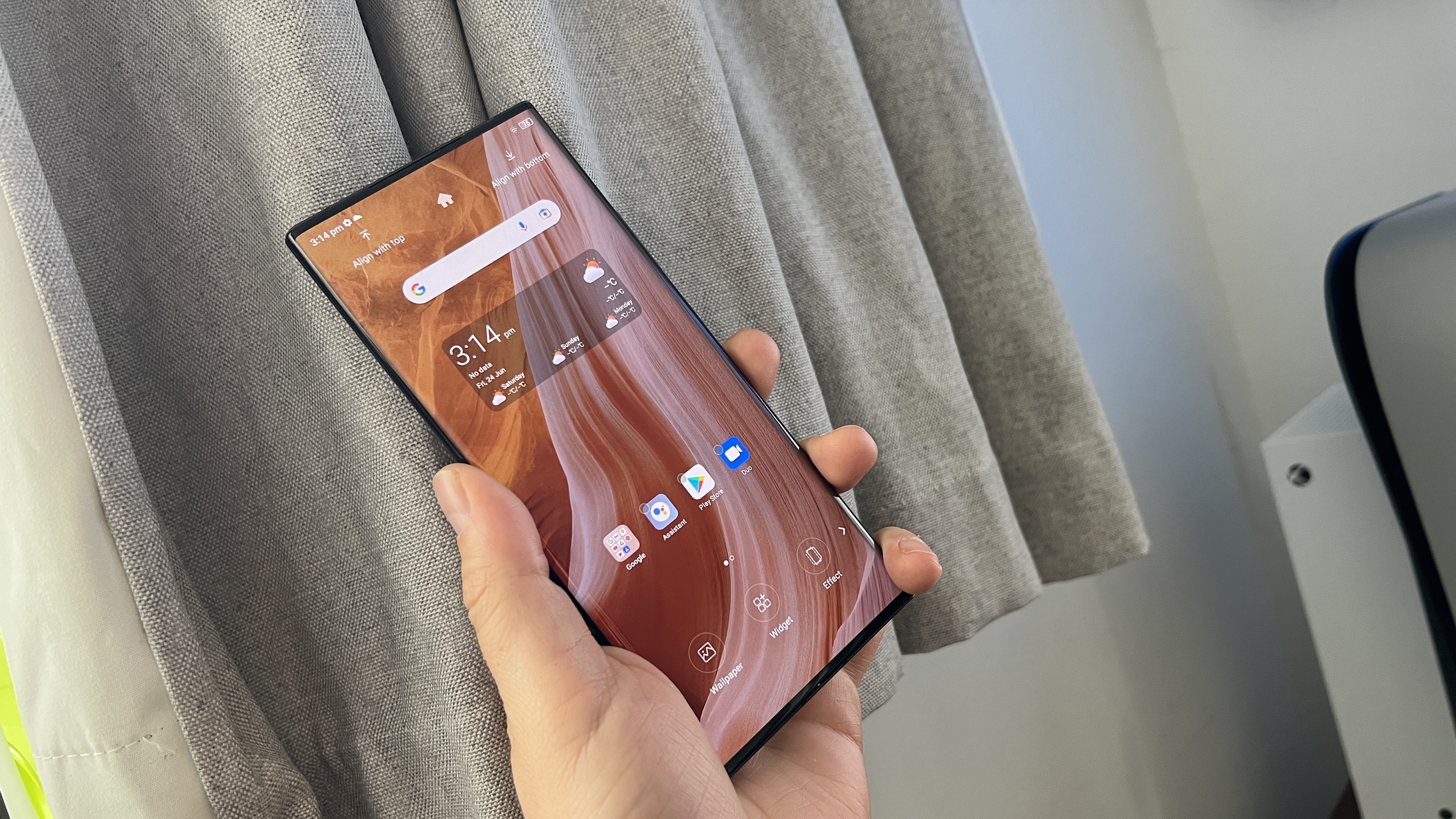
The MyOS 12 UI skin over Android 12 continues the clean combo of tiles and widgets we saw in version 11, alongside a wealth of customization and quality-of-life features like Z-Pop — a customizable equivalent to Apple’s AssistiveTouch that made one-handed navigation on this beast a cinch.
There is a lingering question about software support though, as ZTE has not made clear how long they intend to provide software updates for the 40 Ultra. Going off past experience, the Axon 30 5G did receive Android 12 recently, but any more updates remain up in the air. Compare this to three years of major OS updates for the OnePlus 10 Pro and Pixel 6 Pro along with four and five years of security updates, respectively.
Bottom line
Yes, the selfie camera is pants, but I’m a sucker for value for money. That is what the ZTE Axon 40 Ultra offers in a strong Android flagship packed with powerful specs, good battery life and decent rear cameras.
Hiding the front-facing snapper under the screen has become an artform for ZTE now,; it is one of the best at making it an invisible, un-disturbed rectangle of AMOLED goodness.
All-in-all, if you can work around its pitfalls, this is a decent phone that is pitted against stiff competition.

